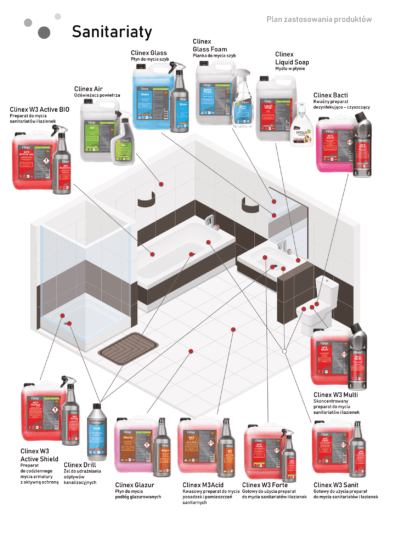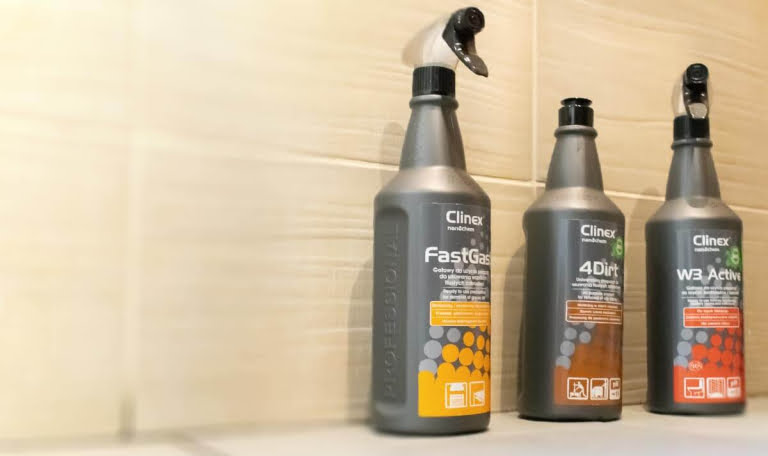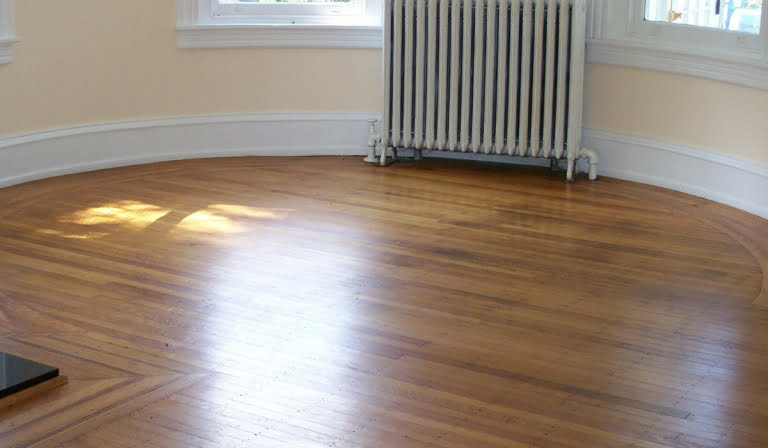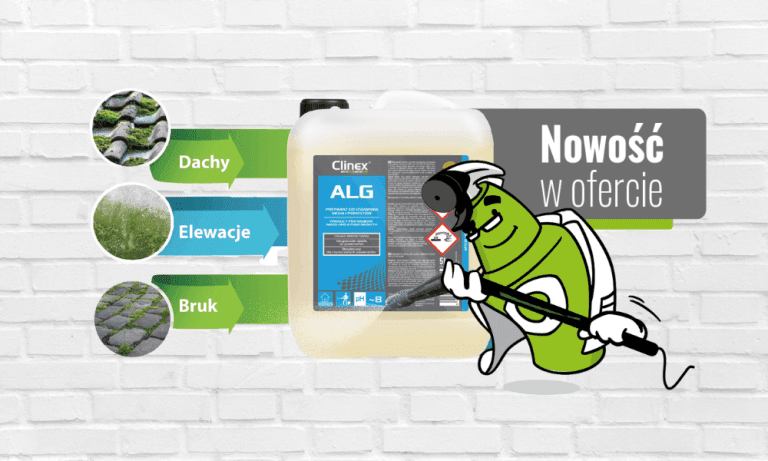Dirt in the bathroom and toilet can vary greatly, from scale and rust deposits to soap and water stains. Cleaning these areas can be time-consuming and difficult, and some cleaning products can be hazardous to health and the environment. Thanks to our tips and tricks, you will be able to clean your bathroom and toilet in an effective and safe way for your health and the environment.In this article, we will present various cleaning methods and products that will help you easily and effectively get rid of dirt in the bathroom and toilet. We will also tell you how to avoid common cleaning mistakes and how to take care of your bathroom to keep it clean for longer.
Soap deposits – how to deal with them?

Soap scum appearing on taps and sinks in the bathroom can be a serious problem. It not only negatively affects the aesthetics of the room, but is also dangerous to health. These pollutants promote the growth of bacteria and germs. This can lead to skin diseases when they get on our hands and body. Therefore, such dirt should be removed regularly and effectively to avoid health hazards.
In the article you will find:
- How to deal with soap scum?
- Effective preparations for removing soap scum.
- Taps and sinks without traces of drops
How to remove scale and deposits in the bathroom? These are effective methods for cleaning bathrooms and toilets.

Rust, water scale and soap scum are difficult to keep the bathroom and toilet clean. Water scale accumulates on the walls of the shower and in the toilet, while soap scum accumulates in the joints and on the bathroom fittings. Regular cleaning is usually enough to keep your bathroom clean and fresh at home. For toilets used by many people, it may be necessary to use more effective and powerful cleaning products.
How to remove scale and deposits in the bathroom – From the article you will learn:
- Where in the bathroom do bacteria and mold grow the fastest?
- What should you pay attention to when choosing a professional bathroom cleaner?
- Why is a professional remedy the best choice?
- What accessories do you need to clean the bathroom?
Innovation in cleaning sanitary surfaces
Due to intense traffic, public toilets require frequent cleaning to avoid the spread of dirt, bacteria and fungi. The cleaning products used for this purpose should be extremely effective and facilitate cleaning in everyday cleaning tasks. It consists of polymers that create a protective layer on the surface, preventing the deposition of lime and soap deposits and dirt.
Thanks to its active ingredients, Clinex W3 Active Shield removes greasy dirt, stone infiltration and rust deposits, while making the surface shiny and leaving a fresh scent in the room.
This agent is intended for cleaning
- shower trays and shower cabins,
- bathtubs,
- bathroom fittings,
- urinals and toilets, washbasins,
- ceramic tiles and glaze,
- as well as elements made of stainless steel.
The protective layer not only provides an aesthetic appearance, but also reduces the risk of multiplication and spread of bacteria, which is extremely important for users of public toilets and bathrooms.
pH of cleaning agents

Floor cleaning products can be divided into three types depending on their pH: acidic, neutral and alkaline. Agents with an acidic pH are effective in removing inorganic dirt, such as hard water deposits or rust. However, agents with a neutral reaction are safe for sensitive surfaces, such as stainless steel or floors protected with polymers or waxes. However, products with an alkaline reaction are effective in removing dirt of organic origin, such as fats or proteins. It is recommended to use agents with an acidic pH in sanitary rooms because they are safe for health and the environment.
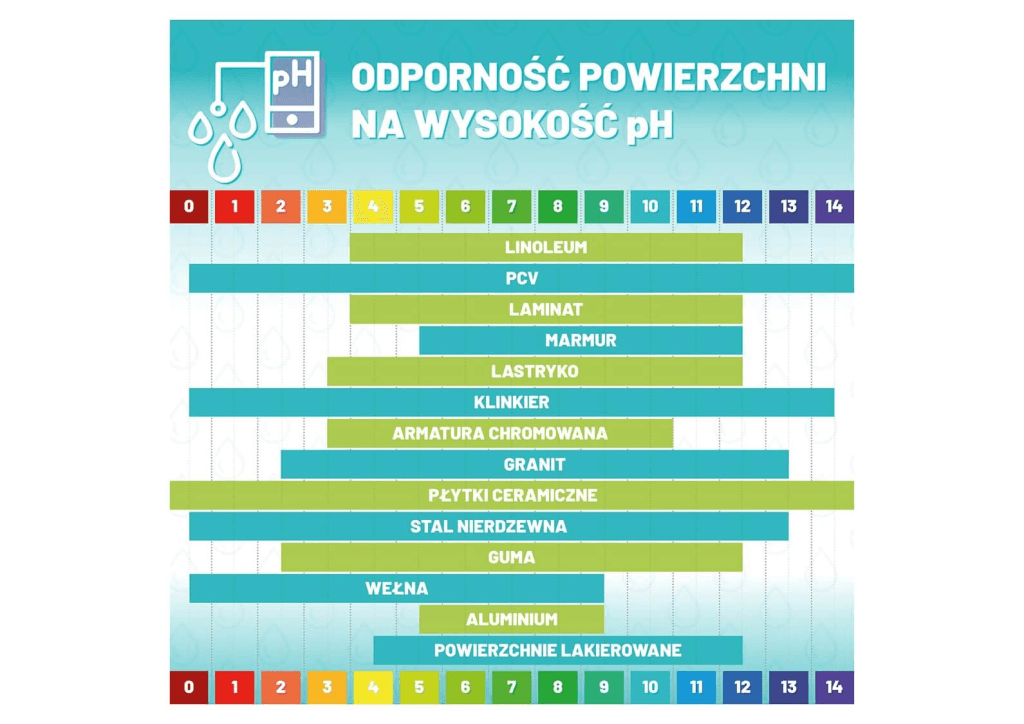
Article https://www.clinex.com.pl/blog/porady/kwasne-ph-srodki-do-mycia-pomieszczen-sanitarnych/
From the article you will learn:
- What is the pH factor and what reactions can we distinguish?
- What are the characteristics of cleaning products with acidic, neutral and alkaline pH?
- What do we use acidic cleaning products for?
4 disinfection areas in toilets

The toilet is a room that requires special attention to cleanliness. It is not enough to just clean toilet surfaces, because they are an excellent habitat for bacteria, microorganisms and viruses that can contribute to the development of diseases and infections. To minimize the risk of spreading infections, it is necessary to disinfect selected areas in the toilet.
The toilet is used by many people and each of them, while performing basic physiological and hygienic activities, touches the surface of the toilet seat, tap or washcloth, which may lead to the transfer of various pathogens to them, exposing other toilet users. To minimize the risk of infections, hygiene rules should be followed and toilet surfaces should be regularly disinfected. What areas in the toilet should be disinfected first?
